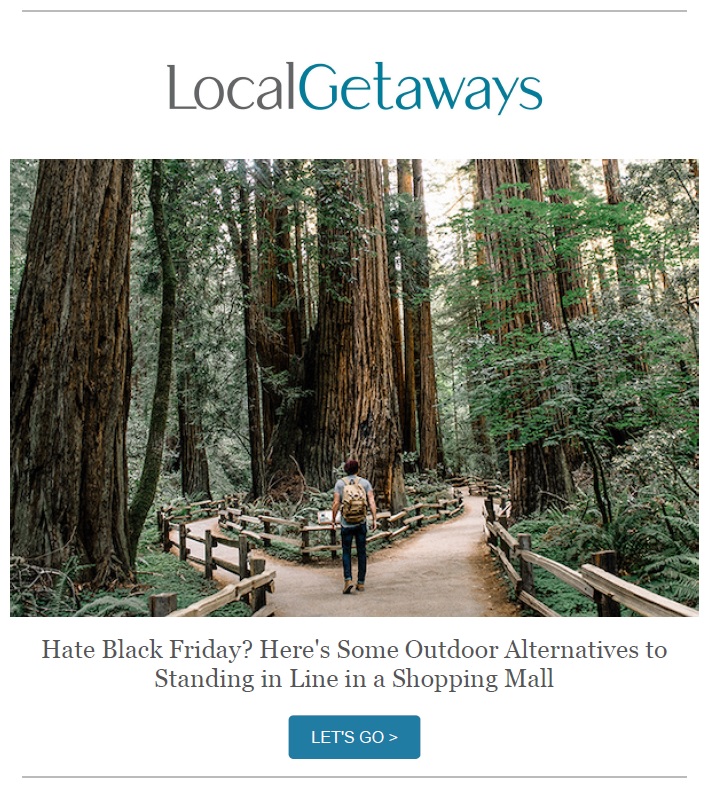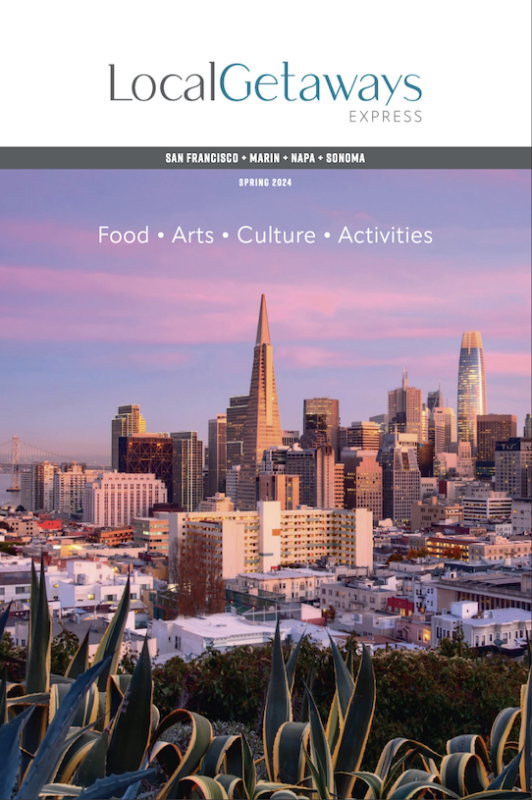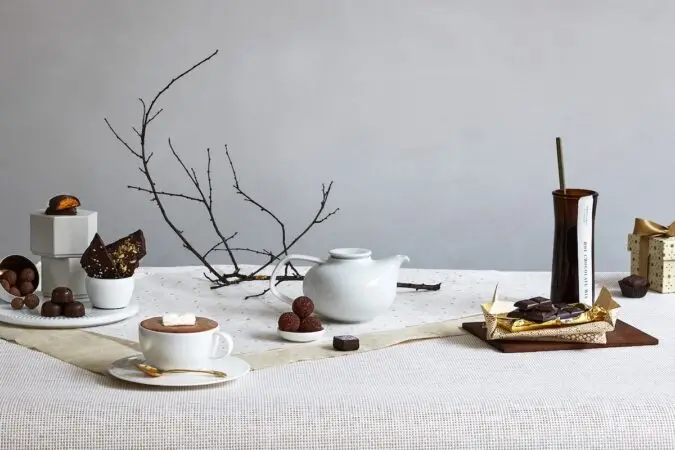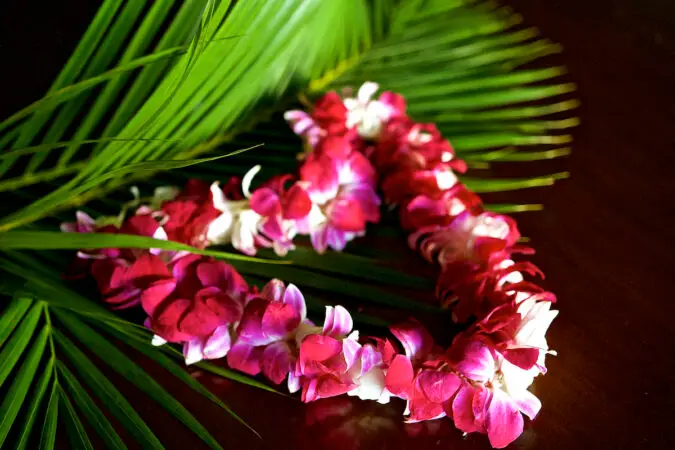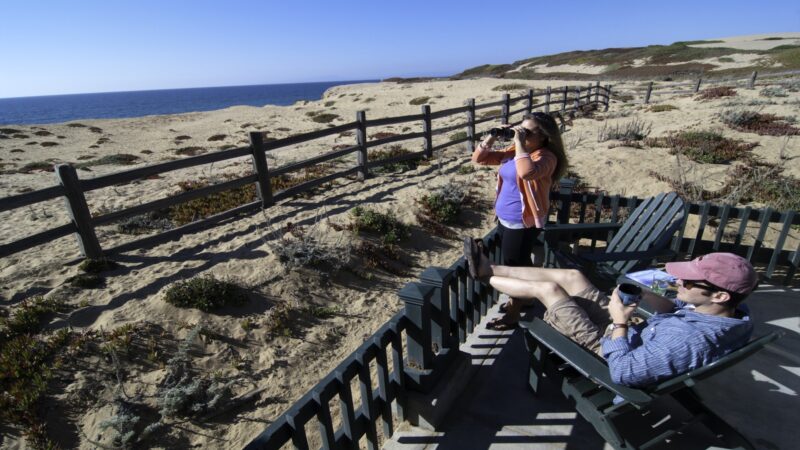Now that springtime is here, it’s time to get outdoors and pay homage to Mother Nature’s handiwork. Blooming orchards, bright swaths of field mustard, and splashes of roadside poppies signal the crescendo of wildflower season, which is building to a peak now and should continue into mid- or late May on the coast and in the Central Valley, depending on the weather. Late-winter rains created ideal conditions for a bumper crop of blooms. So why wait? An overnight getaway with a floral focus is a great way to welcome the spring season. Need somewhere to stay? We’ve also linked our favorite hotels below each section.
Featured Photo: Bouverie Preserve courtesy of Audubon Canyon Ranch
Spring Wildflowers
Interested in seeing what colors pop up this spring? Here’s our guide to viewing local wildflowers, from MALT in Marin.
Early Bloomers
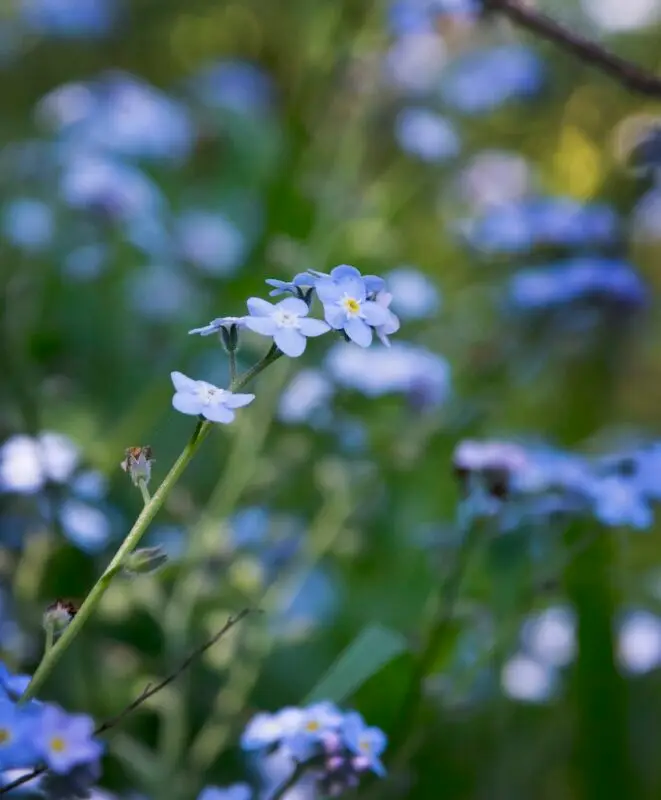
Wildflowers help us mark changes in the seasons. And the most spectacular displays, especially in West Marin, are in the spring when early blooming flowers are abundant.
- California buttercup
- Ranunculus californicus
- Footsteps of spring
- Sanicula arctopoides
- Hound’s tongue
- Cynoglossum grande
- Milkmaids
- Cardamine californica
- Red maids
- Calandrinia menziesii
- Sun cup
- Taraxia ovata
Serpentine Soils
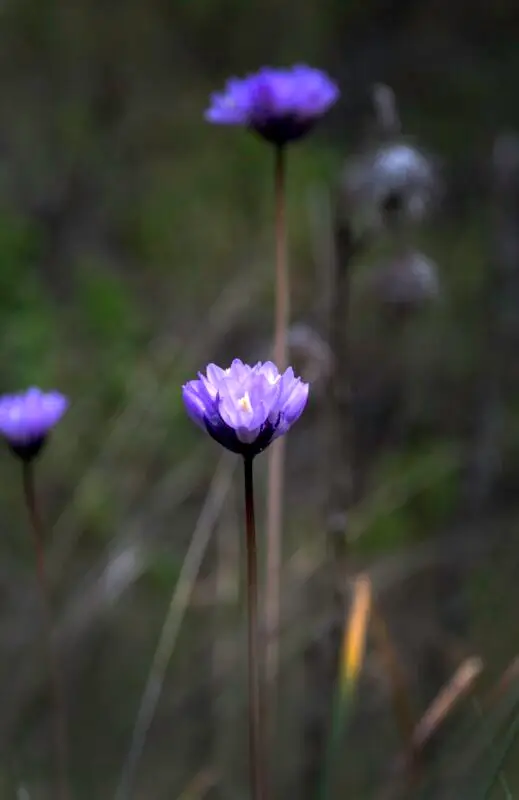
Wildflowers are connected to places. And one of the key components of place is the soil beneath our feet. The serpentine soil that snakes through hillsides in West Marin is rich in magnesium and surprisingly poor in nitrogen and provides a unique environment in which certain native wildflowers thrive.
- California goldfields
- Lasthenia californica
- Shooting star
- Primula hendersonii
- Purple sanicle
- Sanicula bipinnatifida
- Butter ‘n’ eggs
- Triphysaria eriantha
- Purple owl’s clover
- Castilleja exserta
- Blue dicks
- Dipterostemon capitatus
Pollinators
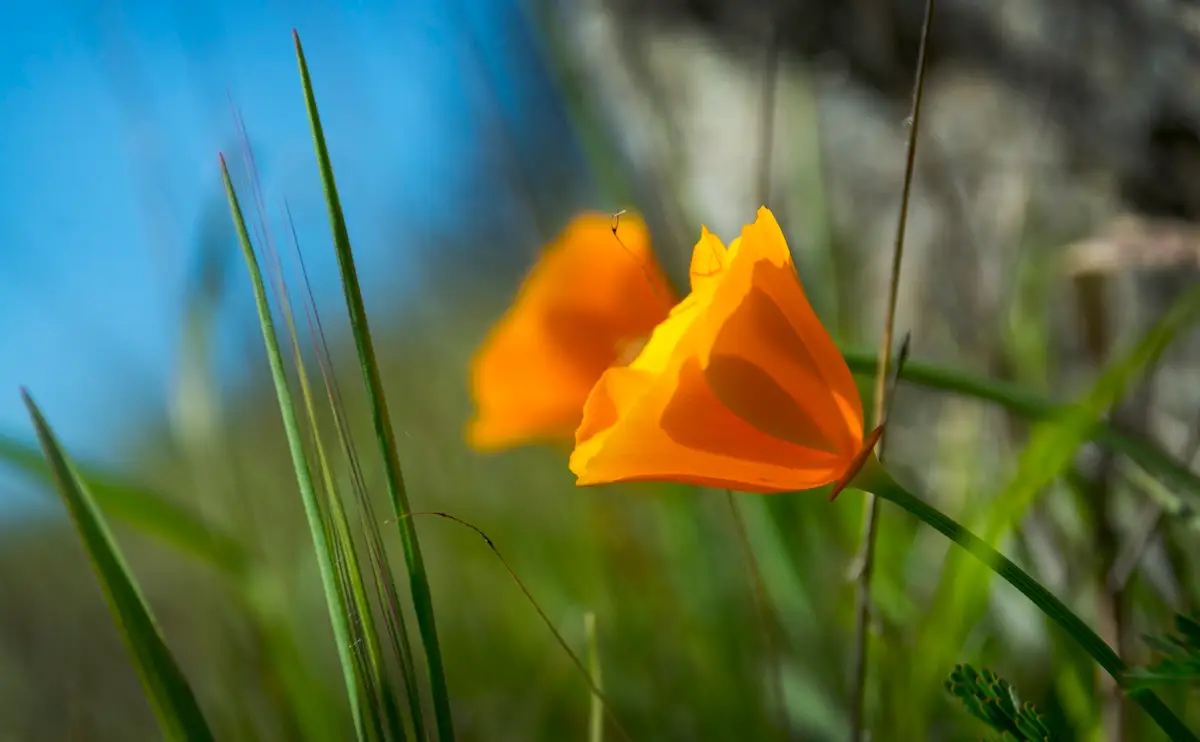
Wildflowers play an important role in healthy ecosystems, providing nectar to robust populations of bees, butterflies and hummingbirds. Farmers and ranchers know better than anyone that these pollinators are crucial to California’s agricultural food economy playing a key role in the production of food, fiber and edible oils.
- Tidy tips
- Layia chrysanthemoides
- California poppy
- Eschscholzia californica
- Cream cups
- Platystemon californicus
- Pacific bleeding heart
- Dicentra formosa
- Blue eyed grass
- Sisyrinchium bellum
- Western yarrow
- Achillea millefolium
Look, Don't Touch
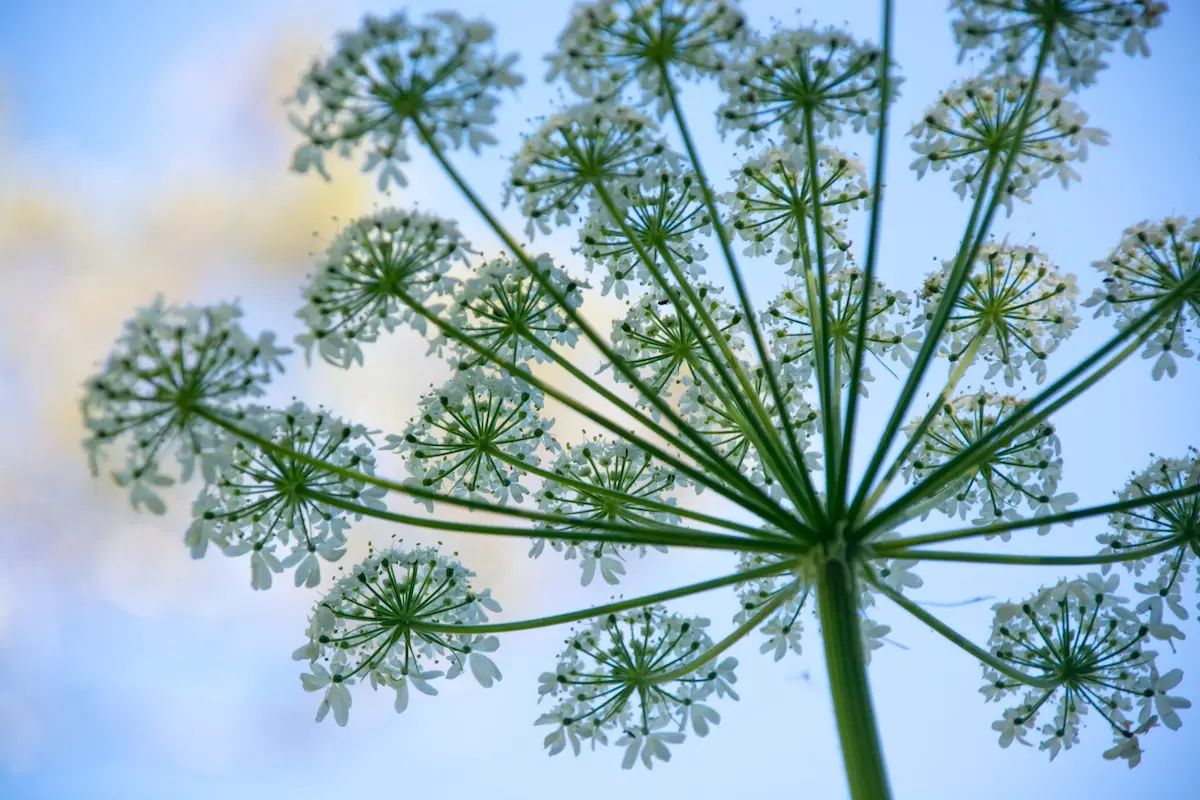
View responsibly by following a few simple guidelines: 1. Never pick wildflowers. Please leave them in place. |
Where to View Wildflowers
Tiburon, Marin County
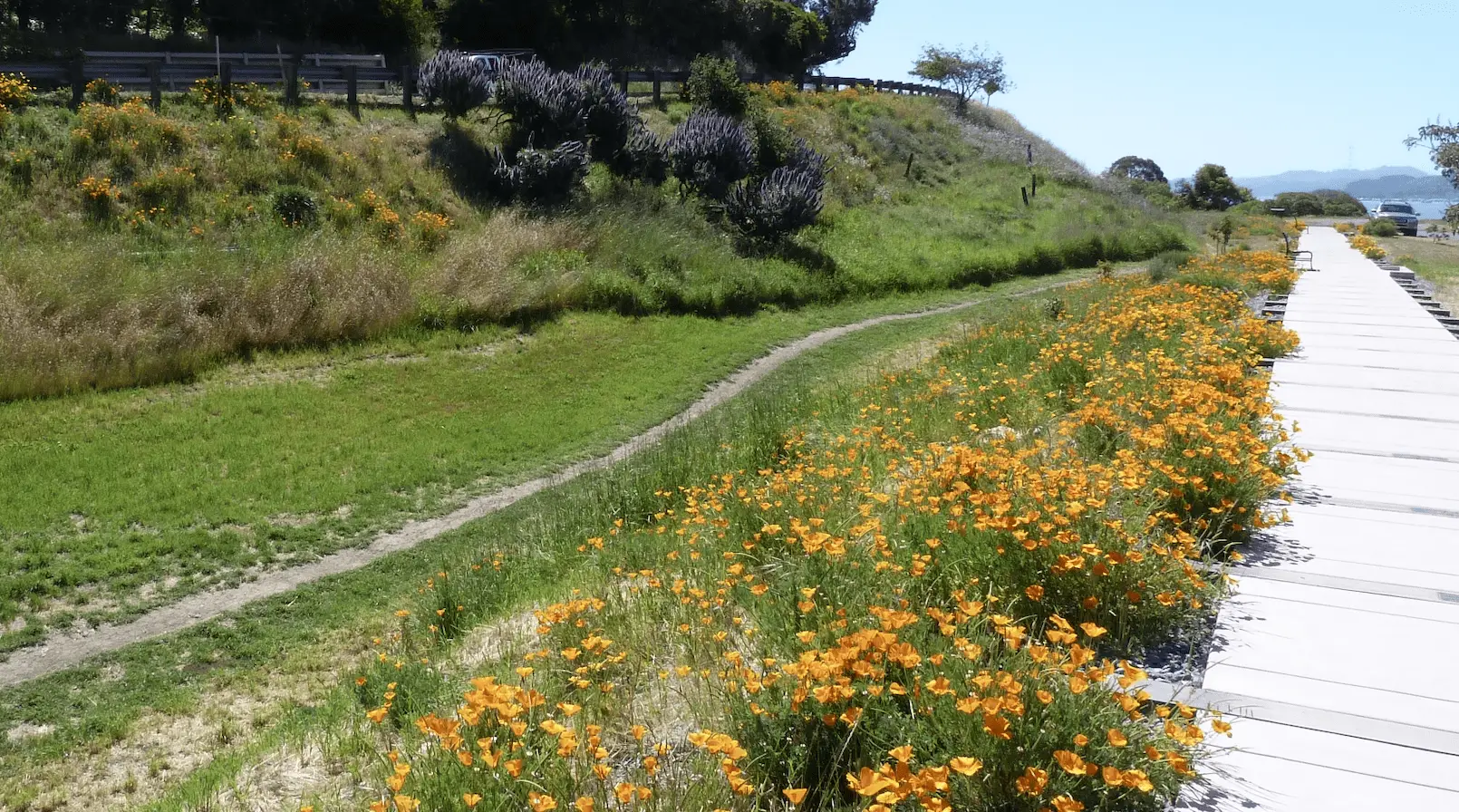
Six volunteers living just beyond the Golden Gate Bridge have labored over three years to create two patches of colorful wildflowers along the road leading into their hometown. Working with expressed approval from Town of Tiburon officials, the half dozen residents, ranging in age from 48 to 85, worked Tuesday and Thursday mornings along with many a Saturday to seed, weed, then weed again at locations near Blackie’s Pasture and along Richardson Bay. Starting with seedings in 2020, each year the California natives have reseeded.
The fruits (or flowers) of their labors are currently enjoying a surge of spring color that’s expected to last into early summer.
Plantings now include Phacelia, Tidy Tips, Lupine, Jupiter’s Beard and, of course, California Poppies. The volunteer’s accomplishment was made especially difficult by the fact that no water was available at or even near the two sites planted. Recycled water available from Marin Municipal Water District had to be carted in by trucks owned by the volunteers. Also adding to the challenge were previous conditions existing at the two sites: The wildflower meadow near Blackie’s Pasture was once a neighborhood dump, and the stretch of California Poppies along Richardson Bay was previously occupied by a variety of many weeds reaching three-feet in height.
San Francisco

One of San Francisco’s greatest assets is the green space that punctuates the city and the Marin Headlands beyond. Of the dozens of special gardens in Golden Gate Park, most recognized are McLaren Memorial Rhododendron Dell, the Rose Garden, the San Francisco Botanical Garden, and, at the western edge of the park, a springtime array of thousands of tulips and daffodils around the Dutch Windmill (a photographer’s dream). The non-profit Golden Gate National Parks Conservancy offers a broad schedule of interpretive activities to help visitors appreciate the many natural resources protected under the park-service umbrella. Among the flower-empowered events on the Conservancy calendar in April and May are Wildflower and Native Plant Walks along the Presidio’s seaside bluffs and Marin’s rolling hills, and volunteering at the Presidio Native Plant Nursery. For information on these activities and many others sponsored by the Conservancy, go to parksconservancy.org.
Napa Valley
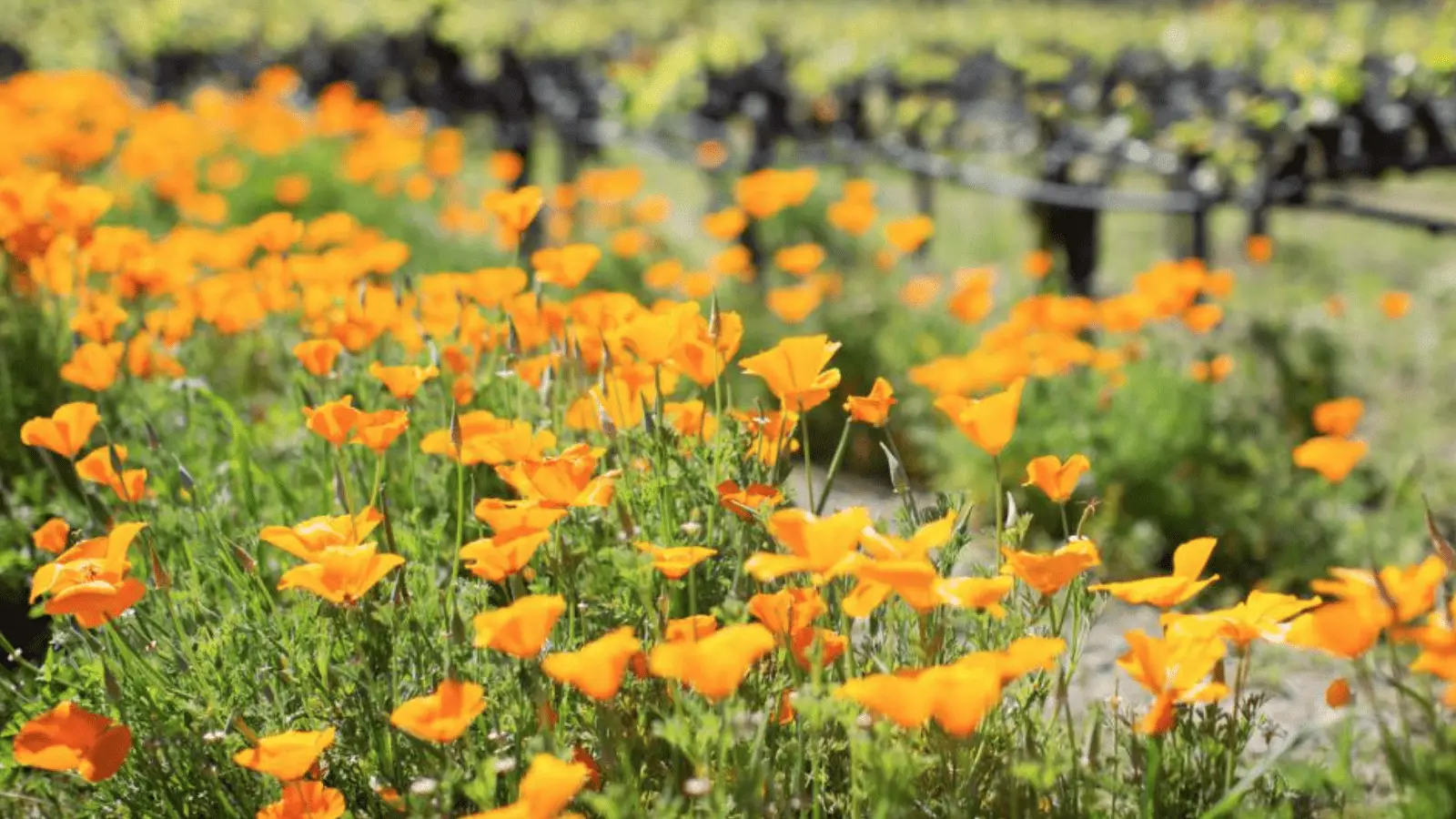
Northern California Wine Country is at its most colorful in spring, when brilliant yellow field mustard (planted for purposes of pollination) blooms in the vineyards, gardens blossom at the wineries and bright stands of poppies, paint brush, lupine, sun cups and other wildflowers spring up on public lands. If Napa Valley is your destination, check out the showcase plantings at wineries including Beringer, Bouchaine, Montlena, Chimney Rock, Clos du Val, Clos Pegase, Domaine Chandon, Hess, Mondavi and Rutherford. If you’d like to take a break from winery tours, Bothe-Napa Valley State Park, on Highway 29/128 between St. Helena and Calistoga, is a great place to stretch your legs, have a picnic and go searching for spring blossoms.
Sonoma County
Should your search for flower power lead you to Sonoma Valley, check out Bouverie Preserve, a 535-acre private property near Glen Ellen that offers naturalist-led wildflower walks by reservation. Also near Glen Ellen is Jack London State Historic State Park, a memorial to the writer who made his home here from 1905 until 1916. It features a museum and several flower-strewn hiking trails.
Monterey Peninsula
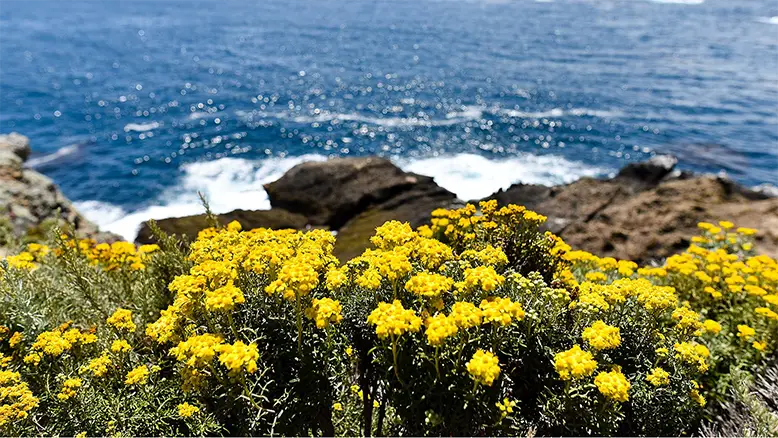
April and May are the best months for coastal wildflowers, and this picture-perfect village is ideally situated for outings that may offer up views of whales, otters, and sea lions along with ice plant, poppies, and other colorful blooms. The famous 17-Mile-Drive at Pebble Beach passes through some of the most gorgeous scenery (and real estate) in California and is well worth the $11.25 per vehicle gate fee. Or, take scenic Highway 1 to Point Lobos State Natural Reserve and soak up some whaling history along with wildflowers and dramatic coastal views. To the south of Carmel lies Big Sur and two state parks — Garrapata and Andrew Molera — within daytrip striking distance. Carmel River State Beach also is nearby.
Daffodil Hill
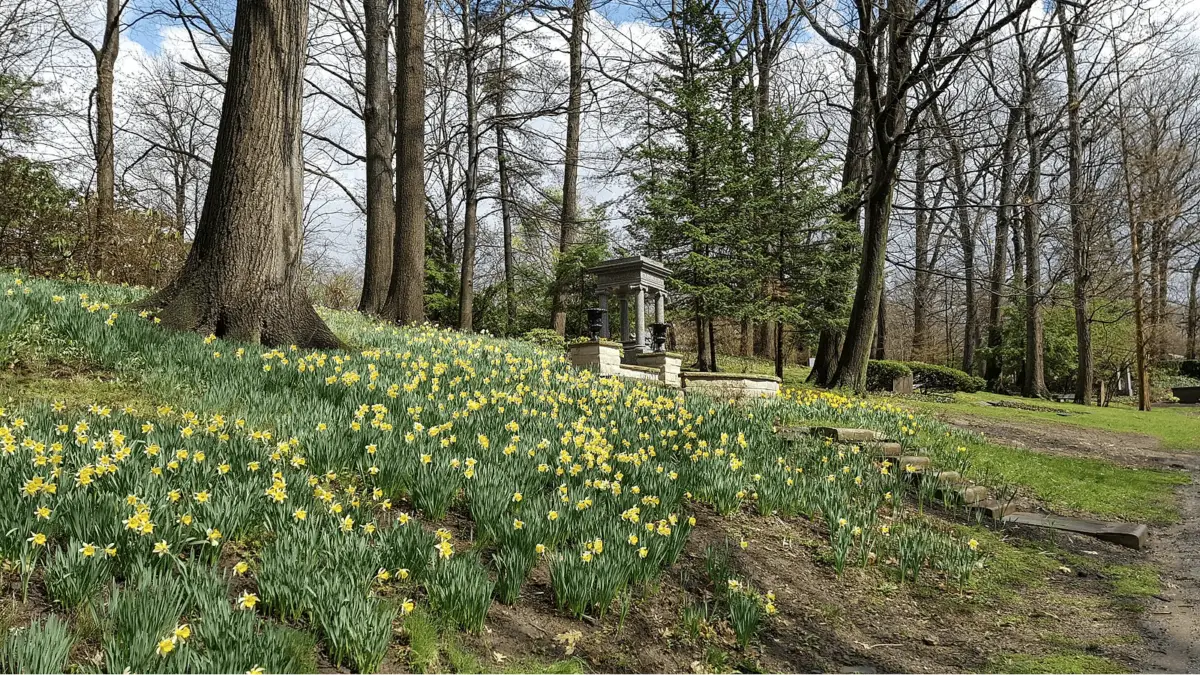
A perennial pilgrimage spot for travelers from Sacramento and the Bay Area, Daffodil Hill is a four-acre farm near the hamlet of Volcano, in Amador County, planted with more than 300 named varieties of daffodils that produce an estimated 300,000 blooms. No, they’re not wildflowers, but they’re guaranteed nonetheless to put an ear-to-ear smile on your face. Optimal time for visiting this year is estimated around the last week of March and first week of April.
Western Railway Museum

The Western Railway Museum in Solano County, a repository of Northern California railroad history, is worthy of a visit any time of year, but April is special. Every Wednesday, Saturday and Sunday throughout the month, the museum operates Scenic Limited excursion trains that take visitors 10 miles roundtrip down the old Sacramento Northern Railway tracks south of Highway 12. There’s no telling what will be blooming, but museum docents will be onboard to interpret what’s there. Admission: $15 general, $12 for children 7-14, and includes the train rides. Bring a picnic lunch to enjoy on the nicely landscaped grounds.
Cache Creek Natural Area
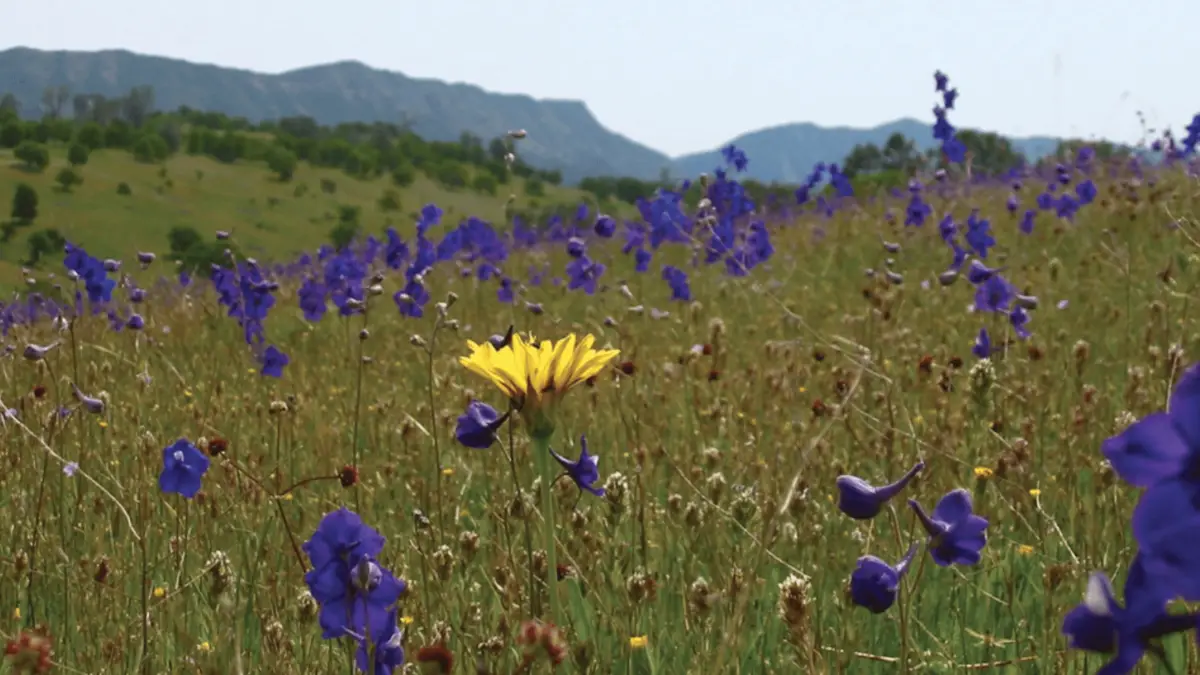
One of Northern California’s most renowned areas for wildflowers is Cache Creek Natural Area, comprised of about 75,000 acres of state, county and Bureau of Land Management lands in Lake County. Floral displays along the Redbud Trail are known to be especially showy.
Russian River Region
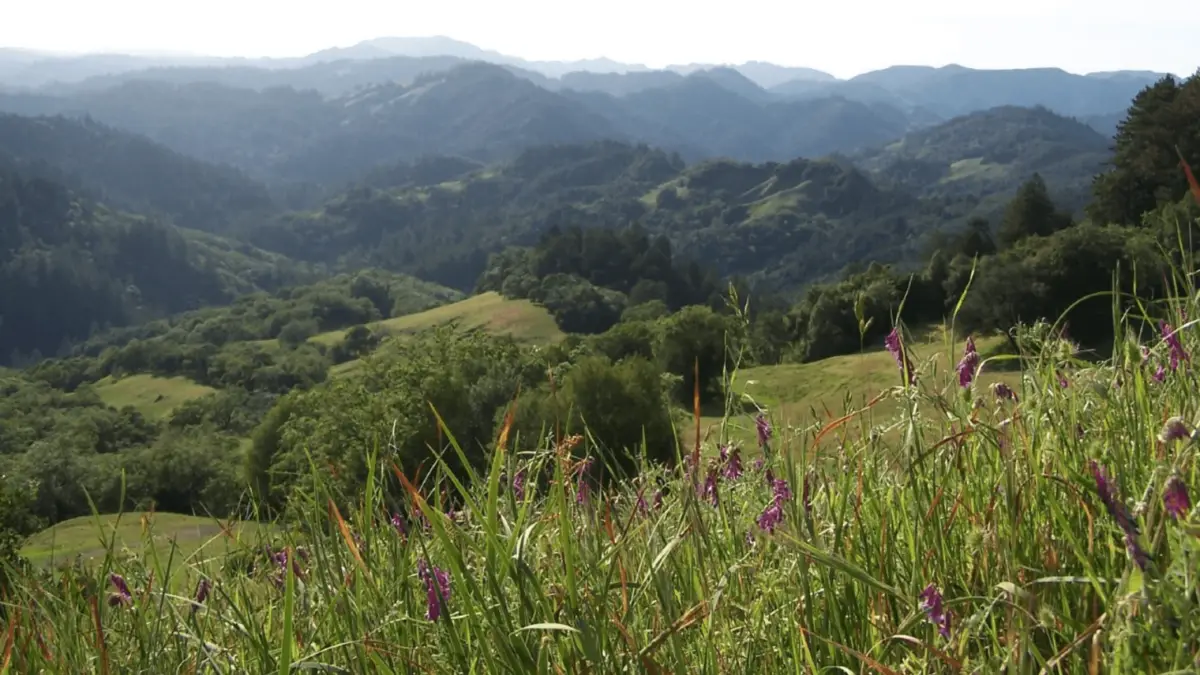
Healdsburg, Guerneville and other towns of the Russian River Valley offer quick access to scenic-driver arteries including Westside Road, River Road and Dry Creek Road, where vineyards vie with public lands for attention. At Armstrong Redwoods State Park, self-guided nature trails meander through magical redwood groves where delicate spring wildflowers compete for light with low-growing ferns and shrubs. The adjacent Austin Creek State Recreation Area is more open and known for brilliant meadow displays of iris, lupine, paintbrush, buttercup and shooting stars.
Jepson Prairie
Tours of one of the few remaining vernal-pool habitats in California are available to visit at the Solano Land Trust’s Jepson Prairie Preserve near Dixon. Vernal pool shrimp and many rare flowers and other plants can be seen.
More Spring Activities in NorCal
Looking for more things to do in the area?
Visit our What to Do in Northern California page!

